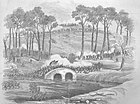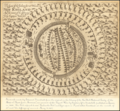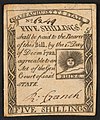Portal:New England
The New England Portal New England is a region comprising six states in the Northeastern United States: Connecticut, Maine, Massachusetts, New Hampshire, Rhode Island, and Vermont. It is bordered by the state of New York to the west and by the Canadian provinces of New Brunswick to the northeast and Quebec to the north. The Gulf of Maine and Atlantic Ocean are to the east and southeast, and Long Island Sound is to the southwest. Boston is New England's largest city and the capital of Massachusetts. Greater Boston is the largest metropolitan area, with nearly a third of New England's population; this area includes Worcester, Massachusetts, the second-largest city in New England, Manchester, New Hampshire, the largest city in New Hampshire, and Providence, Rhode Island, the capital of and largest city in Rhode Island. In 1620, the Pilgrims established Plymouth Colony, the second successful settlement in British America after the Jamestown Settlement in Virginia, founded in 1607. Ten years later, Puritans established Massachusetts Bay Colony north of Plymouth Colony. Over the next 126 years, people in the region fought in four French and Indian Wars until the English colonists and their Iroquois allies defeated the French and their Algonquian allies. (Full article...) Selected article The 21st Massachusetts was part of Ferrero's Brigade, which captured the infamous Burnside's Bridge during the Battle of Antietam on September 17, 1862 After garrison duty at the United States Naval Academy in Annapolis, Maryland, the regiment served with the Coast Division commanded by Maj. Gen. Ambrose Burnside. The Coast Division was deployed in January 1862 for operations on the coast of North Carolina, and participated in the Battle of Roanoke Island and the Battle of New Bern among other engagements. Burnside's division was recalled to Virginia in July 1862. The 21st Massachusetts was then attached to the Army of the Potomac and participated in several of the largest battles of the Civil War, including the Second Battle of Bull Run, the Battle of Antietam (capture of Burnside's Bridge pictured), and the Battle of Fredericksburg. The most devastating engagement of the war for the 21st was the Battle of Chantilly, fought on September 1, 1862, during which the unit suffered 35 percent casualties. From March 1863 to January 1864, the 21st served with Burnside in the Department of the Ohio, seeing action in Kentucky and eastern Tennessee. In May 1864, the regiment rejoined the Army of the Potomac, participating in Lt. Gen. Ulysses Grant's Overland Campaign and the Siege of Petersburg. (Full article...) Selected biography
Samuel Adams was a Massachusetts statesman, politician, writer, and political philosopher, and one of the Founding Fathers of the United States. Adams was instrumental in garnering the support of the colonies in rebellion against Great Britain, ultimately resulting in the American Revolution. He was also one of the key architects of the principles of American republicanism that shaped American political culture. Adams organized protests against the British, including the Boston Tea Party in 1773, and participated in the Continental Congress. He also advocated for the adoption of the Declaration of Independence at the Second Continental Congress. Following the American Revolution, Adams helped draft the Articles of Confederation. After the war ended, he ran for the House of Representatives in the 1st United States Congressional election, but was unsuccessful in his bid. He was elected Lieutenant Governor of Massachusetts in 1789 and after John Hancock's death in 1793, Adams served as the acting governor, until he was elected governor in January of the following year. He served in that position until June 1797 when he decided to retire from politics. (Full article...)
Selected pictureJoseph E. Baker's 1892 lithograph, depicting the Salem witch trials
General images -The following are images from various New England-related articles on Wikipedia.
Did you know (auto-generated)
Related portalsMore did you know...
Selected State
Rhode Island
Incorporated 1776 Co-ordinates 41.7°N 71.5°W Rhode Island, officially the State of Rhode Island and Providence Plantations, is the smallest in area, the 8th least populous, but the 2nd most densely populated of the 50 U.S. states. Rhode Island was the first of the original Thirteen Colonies to declare independence from British rule, declaring itself independent on May 4, 1776, two months before any other colony. The State was also the last of the thirteen original colonies to ratify the United States Constitution. Rhode Island's official nickname is "The Ocean State," a reference to the State's geography, since Rhode Island has several large bays and inlets that amount to about fourteen (14) percent of its total area. Its land area is 1,045 square miles (2706 km2), but its total area is significantly larger. (Full article...) WikiProjectsAssociated WikimediaThe following Wikimedia Foundation sister projects provide more on this subject:
Discover Wikipedia using portals |
















































































